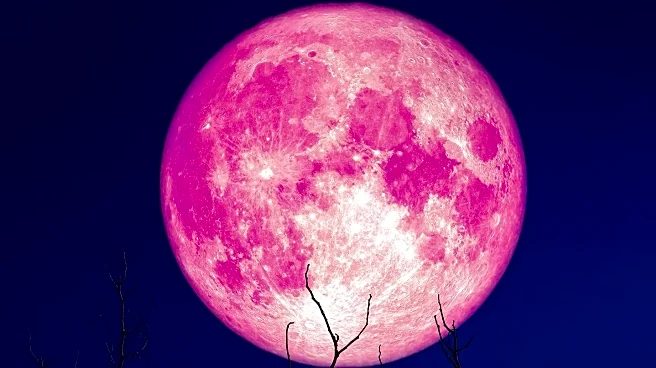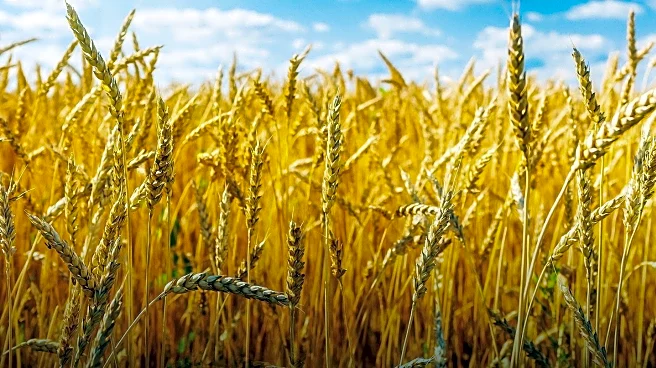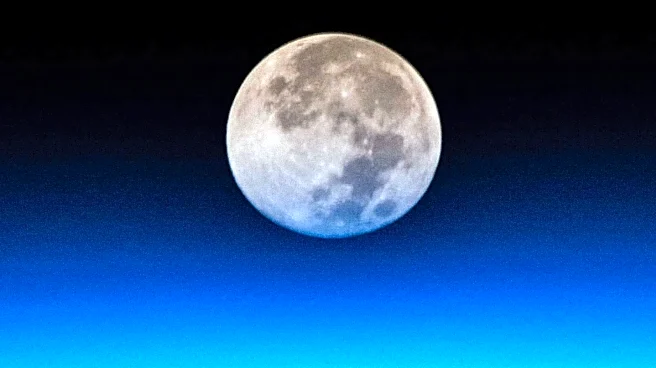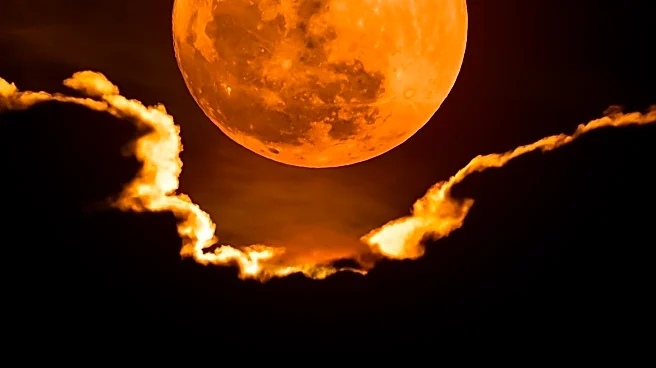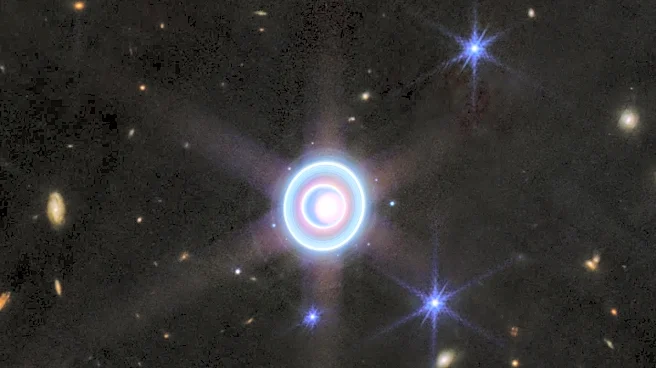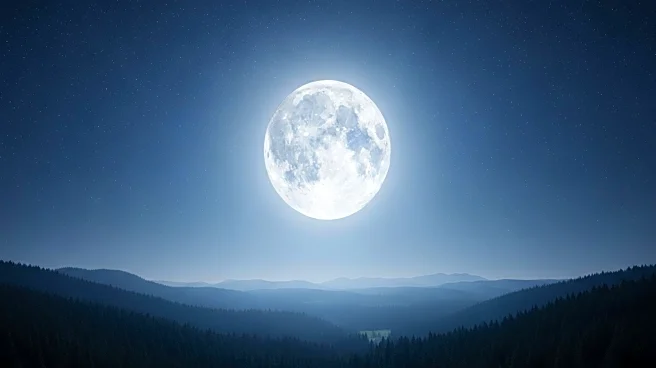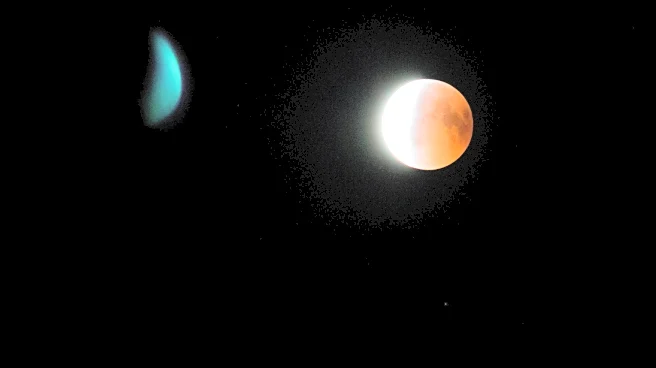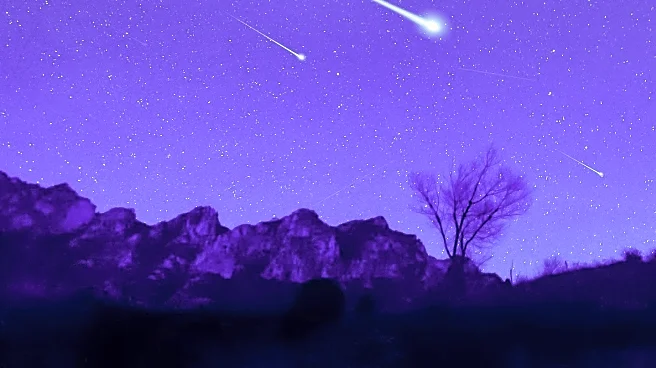What's Happening?
The Harvest Moon, the first of three supermoons this year, will grace the night sky on Monday, accompanied by a bright Saturn. This supermoon occurs when the full moon is at its closest approach to Earth, known as perigee, during its elliptical orbit. The Harvest Moon will be approximately 222,989 miles from Earth, appearing 30% brighter and up to 14% larger than a typical full moon. The event offers a unique opportunity for stargazers to observe the moon's reddish-orange glow as it rises above the horizon, with peak illumination at 11:48 p.m. EDT. Saturn will be visible as a bright object near the moon, providing a celestial double-header for observers.
Why It's Important?
The Harvest Moon is culturally significant, traditionally marking the time when farmers would harvest crops under its light. This year's occurrence in October replaces the Hunter's Moon, a rare event that happens only 18 times between 1970 and 2050. The supermoon and Saturn's visibility offer educational opportunities for astronomy enthusiasts and the general public, encouraging engagement with the night sky. Observing such events can foster a greater appreciation for natural phenomena and inspire interest in scientific exploration. Additionally, the increased brightness of the moon can impact nocturnal wildlife and human activities, providing a natural light source.
What's Next?
Following the Harvest Moon, the next supermoon, known as the Beaver Moon, will occur on November 5, followed by the Cold Moon on December 4. These consecutive supermoons provide ongoing opportunities for astronomical observation and public engagement. Astronomers encourage people to explore the night sky regularly, as it offers a chance to observe constellations, planets, and other celestial events. The University of New Hampshire Observatory plans to host special sessions for stargazers, promoting educational activities and community involvement in astronomy.



